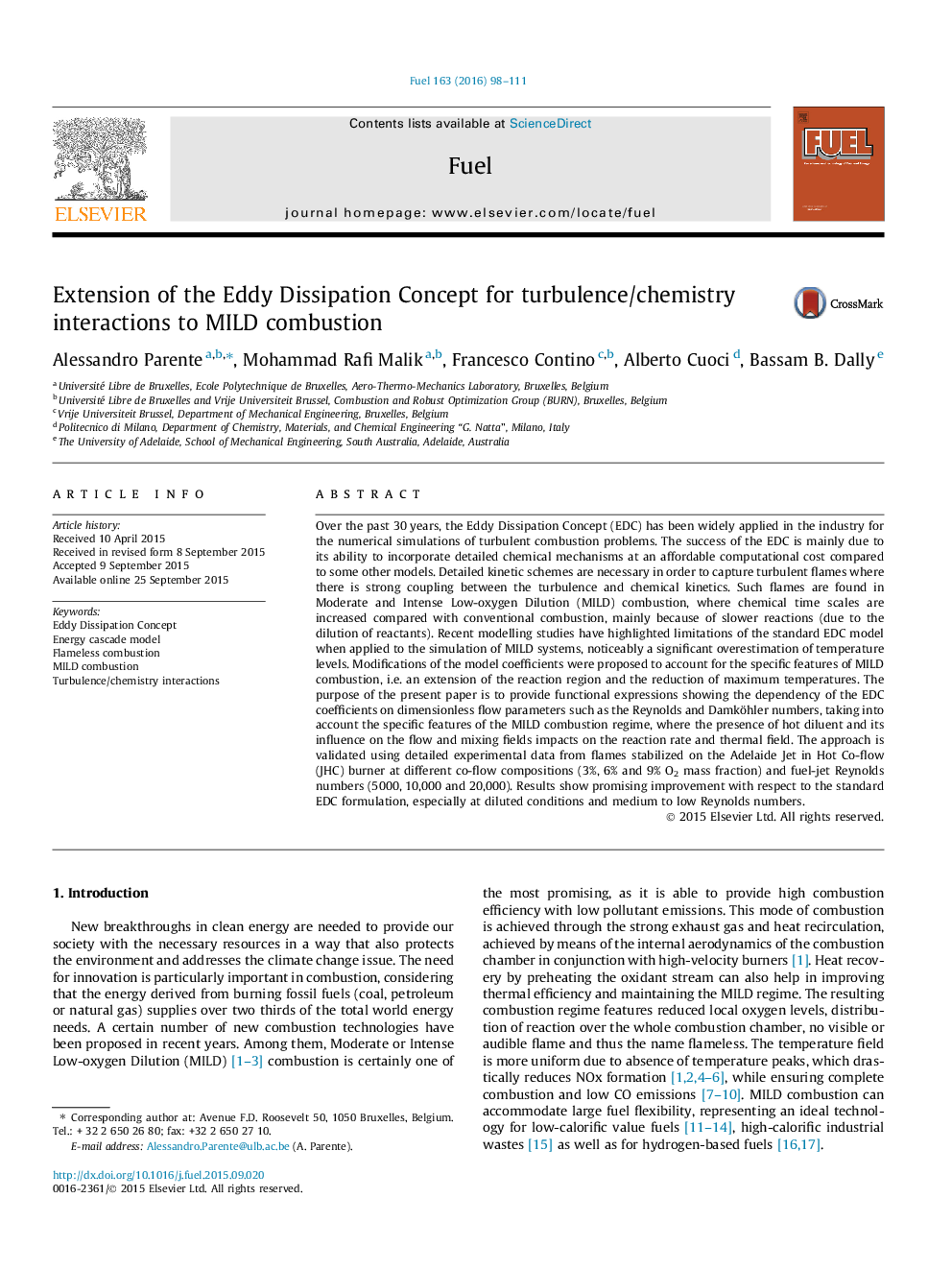| کد مقاله | کد نشریه | سال انتشار | مقاله انگلیسی | نسخه تمام متن |
|---|---|---|---|---|
| 205492 | 461111 | 2016 | 14 صفحه PDF | دانلود رایگان |

Over the past 30 years, the Eddy Dissipation Concept (EDC) has been widely applied in the industry for the numerical simulations of turbulent combustion problems. The success of the EDC is mainly due to its ability to incorporate detailed chemical mechanisms at an affordable computational cost compared to some other models. Detailed kinetic schemes are necessary in order to capture turbulent flames where there is strong coupling between the turbulence and chemical kinetics. Such flames are found in Moderate and Intense Low-oxygen Dilution (MILD) combustion, where chemical time scales are increased compared with conventional combustion, mainly because of slower reactions (due to the dilution of reactants). Recent modelling studies have highlighted limitations of the standard EDC model when applied to the simulation of MILD systems, noticeably a significant overestimation of temperature levels. Modifications of the model coefficients were proposed to account for the specific features of MILD combustion, i.e. an extension of the reaction region and the reduction of maximum temperatures. The purpose of the present paper is to provide functional expressions showing the dependency of the EDC coefficients on dimensionless flow parameters such as the Reynolds and Damköhler numbers, taking into account the specific features of the MILD combustion regime, where the presence of hot diluent and its influence on the flow and mixing fields impacts on the reaction rate and thermal field. The approach is validated using detailed experimental data from flames stabilized on the Adelaide Jet in Hot Co-flow (JHC) burner at different co-flow compositions (3%, 6% and 9% O2 mass fraction) and fuel-jet Reynolds numbers (5000, 10,000 and 20,000). Results show promising improvement with respect to the standard EDC formulation, especially at diluted conditions and medium to low Reynolds numbers.
Journal: Fuel - Volume 163, 1 January 2016, Pages 98–111